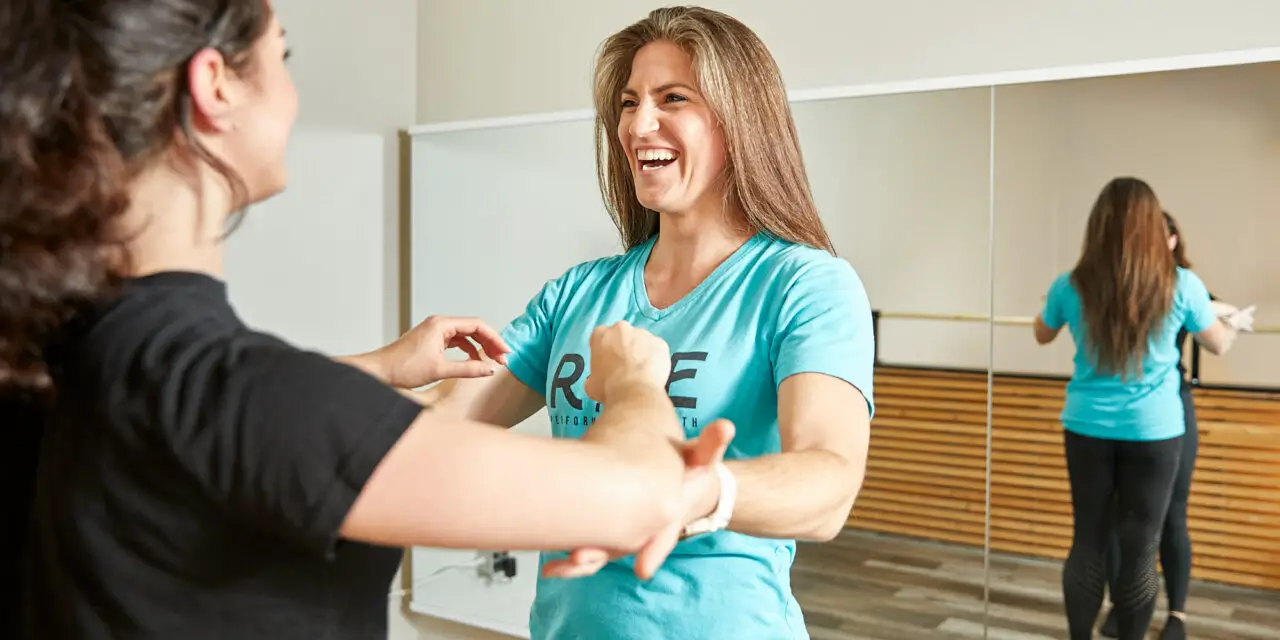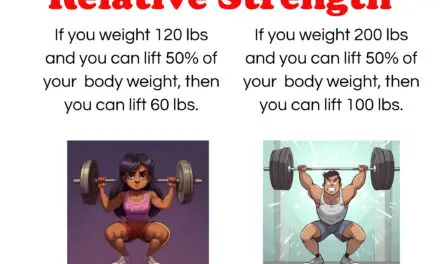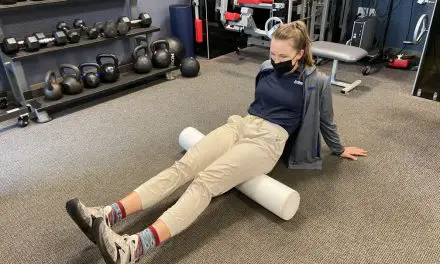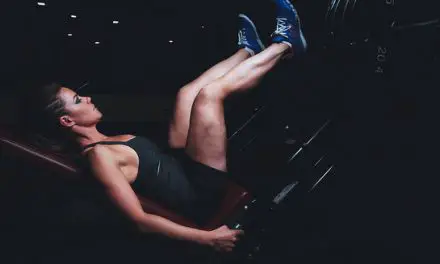Dance physical therapy is where a physical therapist treats a dancer’s injuries and helps to improve their performance mostly with exercise and movement. They evaluate the nature of an injury and monitor the progress of their recovery, much like almost any athlete.
But don’t get this confused with “dance therapy.”
“[As a] provider, I’m providing physical therapy for dancers, a service that’s targeted toward the needs and challenges of dancers to reduce their limitations and make them stronger to perform at their peak,” Dr. Stephanie Irwin said, who is a physical therapist and owner of RISE Performance and Health in Seattle, Wash.
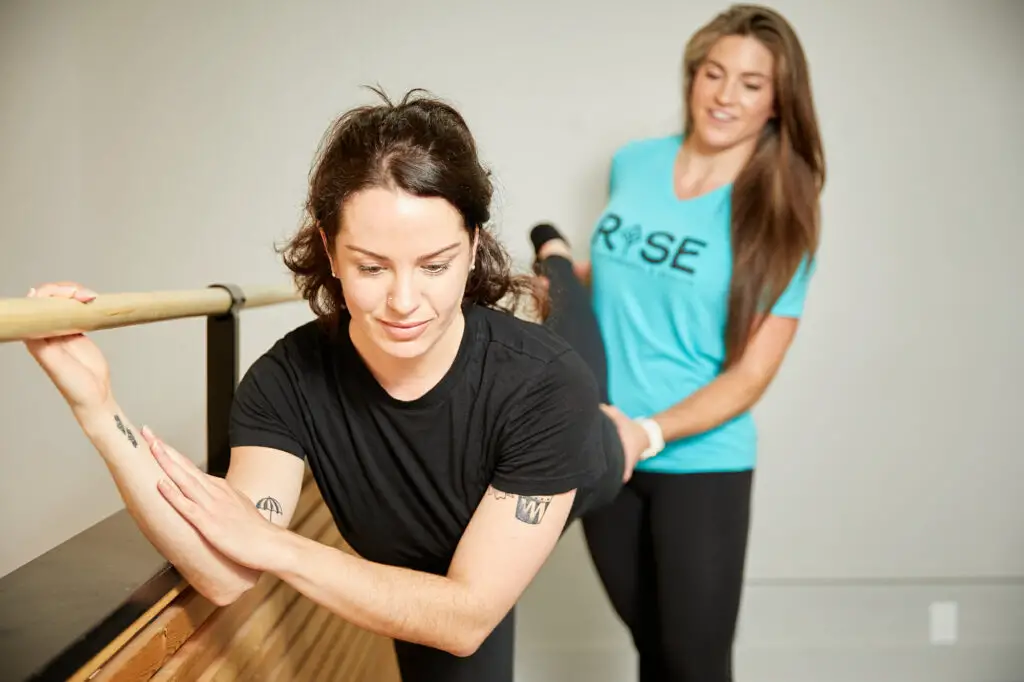
Physical therapist Stephanie Irwin (r) helps a patient with her dance rhythm and balance at RISE Performance & Health in Seattle, Wash. (Photo by Rachel Mayhew.)
She said that dance therapy is using dance as a way to move better and improve mental health for many people, not just dancers. It allows people to explore different types of movements within their abilities while synchronizing such movements with music.
“We can use movement to change our brain chemistry, or even for Parkinson’s disease, for instance,” Irwin said. “You can use music to help movement by bypassing the systems in the basal ganglia that are being disrupted [from getting] dopamine.”
With the right dosage, general exercise and movement can induce natural painkilling effects (exercise analgesia), especially if a patient in pain hasn’t exercised much in their life because of having a sedentary lifestyle, disability, and/or disease that limits their movements.
“However, when working with pain specifically, it is important to take into consideration principles of neuroplasticity, as this involves reshaping our nervous system to unlearn pain,” said Dr. Amanda Rixey, who is a dance physical therapist in Seattle, Wash., who works with ballet and modern dancers.
Neuroplasticity refers to the brain’s ability to adapt to various life experiences, such as pain, injury, and novelty, in which the latter is something Rixey believes is what helps patients reduce their pain.
“This allows the non-dancer to experience movement that is mentally stimulating and new, hopefully bypassing any fear avoidance or pain catastrophizing behaviors [they] may have regarding specific movement patterns routine to their daily activities.”
And because dance is a social activity that often has music, Rixey said that all of these stimuli could enhance the painkilling effects.
“Movements that appear to have no functional goals challenge the imagination and are more conducive to learning through experimentation and discovery than are movements specifically directed toward functional goals, such as strengthening muscles or increasing ambulation endurance. When repetitive practice of such movements is necessary, musical accompaniment, varying the rhythms, tempos, and styles, was used.” ~ Hecox, Levine, Scott (1976)
What does a physical therapist do for a dancer?
If you’re an injured runner, you’re likely going to be doing some running when you work with a physical therapist.
And you’re an Olympic weightlifter or Crossfitter, you’re likely gonna be lifting stuff.
“We’re going to be doing a lot of dance,” Irwin said, “and going through dance movements and addressing body image—especially for female dancers—that changes how they hold their body. They might be trying to present themselves or look in a certain way.”
Among her dance patients, Irwin primarily works with those in the local Latin dance communities, which include salsa, mambo, Zouk, and bachata. While the type of injuries and pain that they often get is similar to ballet and modern, the nature of Latin dance is social-based as opposed to performance-based, which affects compliance.
Irwin recalled a patient, who had multiple joint injuries in her foot, went to a three-hour salsa social, which made her pain worse.
“I understand it. It’s very hard not to dance because it’s so social-based,” Irwin said. “[Dance] is a huge part of our mental health.”
In theory, there’s not much difference in how physical therapists treat dancers vs. non-dancers. While patients still go through a typical assessment, how a therapist communicates to them and understands the nature of the dance can help build a better relationship. This factor has been shown to have a significant positive impact on how well patients get better.
Rixey finds that the communication style to dancers is very different for nondancers.
“Dancers generally have a thorough understanding about anatomy and movement, requiring very specific and nuanced education, as well as manual and active interventions,” she said. “They generally know what they need or simply need guidance on how to get there.”
Her assessments are dance-specific and usually take longer than a typical one with a nondancer because of the intricacy of the movements and the type of choreography that individual dancer is doing.
“Dancers often need treatments to get them through class that day, week, or a performance,” Rixey said. “This looks very different than a traditional rehabilitation model, as the goals are often shorter-term with constant addressing of long-term needs at the same time.”
But exercise isn’t the only thing that dance physical therapists do. Rixey recalled that one of the biggest challenges she had was negotiating with competitive dancers who continued to practice or perform despite having extreme pain.
“Historically, dancers are taught to push through most pain, as the sport is generally not the most natural on the body and can require specific shoes like pointe shoes, tap shoes, etc. that contribute to this,” she said. “While this self-distraction and tenacity allows the dancer to perform at an amazing caliber, it also often comes with a cost.”
This cost is repetitive injuries caused by overuse, and oftentimes dancers won’t address the symptoms until they cannot perform basic functions like walking.
“This often ends a dancer’s career and has long-term effects, as well as potentially requires something like surgical intervention or leads to chronic pain,” Rixey said. “The healing process then requires not only physical interventions, but often the skills of a mental health provider to shift these belief patterns.”
So it takes team effort to decide whether a dance patient should continue to perform or not and the progress of the treatment, which includes not only the dancer and the physical therapist, but also the dance coaches and choreographers.
“[The progress] will always look different for each individual and there is unfortunately no one protocol to follow to come to that conclusion,” Rixey said.
“Participants became exhilarated by newly discovered body movement capabilities, and often attained heightened kinetic and spatial awareness as well. This new awareness may help to overcome a patient’s preoccupation with pain.” ~ Hecox, Levine, Scott (1976)
Where do I find a dance physical therapy internship?
There are several options for physical therapy students who want to be involved with dance medicine. These include:
- John Hopkins Medicine’s Division of Sports Medicine
- NYU Langone’s Harkness Center for Dance Injuries
- The International Association for Dance Medicine and Science has a list of dance internships worldwide, including Australia, Germany, Hong Kong, and Brazil.
But if you cannot find one locally or afford one, Irwin offered a few options:
- Gain work experience at clinics that work with dancers;
- Shadow a dance physical therapist;
- Take continuing education courses and post-doctoral training.
What should dancers look for in a best PT to work with?
Just like marathoners work with marathon coaches, most physical therapists would agree that you should work with someone who has a similar dance background and caliber as you do.
“For example, it is very hard for a non-dancer or dancer who has never worn pointe shoes or trained at the pre-professional level to work with or fully understand the female professional or pre-professional ballet dancer needs,” Rixey said.
For Latin-style dancers, they should find a therapist who understands not only the movements of specific dance styles but also the social aspects and mindset of this population.
“The nuance movements of Zouk or bachata place a very different stress on our spine and bodies amongst a population that is not classically and disciplinarily trained like people who grew up in ballet or jazz,” Irwin said. “This population enters this [dance] space from a social element or growing up culturally, and it’s not about becoming this formal dancer. It’s about an expression of culture or connection.”
Because of the social nature of Latin dance, people tend to let their social needs override their physical needs. She emphasized that any rehab program must cater to the individual’s timeframe and schedule. In other words: no cookie-cutter templates.
“[Dance] is a huge part of someone’s identity, social life, and mental health,” Iriwn said. “So that would be another element that I hope people would look for.”
Feature photo: Left to right: Los Muertos Crew, Fabrício Lira, Rodnae Productions, Beatrice Braga.
A native of San Diego for nearly 40 years, Nick Ng is an editor of Massage & Fitness Magazine, an online publication for manual therapists and the public who want to explore the science behind touch, pain, and exercise, and how to apply that in their hands-on practice or daily lives.
An alumni from San Diego State University with a B.A. in Graphic Communications, Nick also completed his massage therapy training at International Professional School of Bodywork in San Diego in 2014.
When he is not writing or reading, you would likely find him weightlifting at the gym, salsa dancing, or exploring new areas to walk and eat around Southern California.

